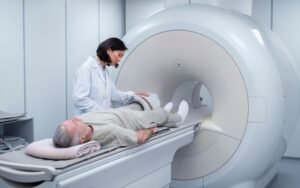CALL US NOW :
+91 9520870401
MAILING ADDRESS :
galaxyhospitalagra@gmail.com
+91 9520870401
galaxyhospitalagra@gmail.com

When it comes to orthopedic care, finding the right doctor and hospital is crucial for ensuring a swift recovery and long-term mobility. If you are looking for the best orthopedic doctor in Agra, you need to consider various factors such as experience, facilities, treatment approach, and patient care. Galaxy Hospital, a multispecialty hospital located in Agra, is renowned for its comprehensive orthopedic services, equipped with advanced technology and a team of skilled doctors specializing in joint and bone diseases.
Orthopedics is a medical field that deals with the diagnosis, treatment, and prevention of conditions affecting the bones, joints, muscles, and ligaments. At Galaxy Hospital, our orthopedic specialists provide comprehensive care for a wide range of musculoskeletal issues, from fractures to chronic conditions like arthritis. Our team, known for being among the best orthopedic doctor in Agra, utilizes advanced technology and personalized treatment plans to restore mobility and improve quality of life, positioning Galaxy Hospital as the best orthopedic hospital in Agra for orthopedic care.
Understanding common orthopedic conditions helps patients make informed decisions about their health. Below are the most frequently encountered issues and how Galaxy Hospital’s experts handle them.
Fractures occur when the bone is broken, and they can vary in severity:
Diagnosis: X-rays and CT scans are used to assess the type and severity of the fracture.
Treatment: Treatment ranges from casting and bracing to surgical intervention, such as internal fixation using plates, screws, or rods.

Osteoarthritis is a degenerative condition where joint cartilage wears down over time.
Treatment:
Rheumatoid arthritis is an autoimmune disorder where the immune system attacks healthy joints.
Tendonitis is inflammation of a tendon, commonly affecting the rotator cuff, Achilles tendon, and elbows (tennis elbow).
Scoliosis is a condition characterized by an abnormal curvature of the spine.
Spinal disc problems include:
Treatment: Includes physical therapy, medications, and, in severe cases, surgery like discectomy or spinal fusion.
Bone tumors can be either benign (non-cancerous) or malignant (cancerous).

Accurate diagnosis is crucial in orthopedic treatment. At Galaxy Hospital, we use advanced diagnostic tools to ensure precise assessment and treatment planning.
X-rays: The most common imaging tool for detecting fractures, joint dislocations, and bone diseases.
Magnetic Resonance Imaging (MRI): Used to get detailed images of soft tissues, such as tendons, ligaments, and cartilage.
Computed Tomography (CT): Excellent for evaluating complex fractures and joint issues.
Ultrasound in Orthopedics: A non-invasive tool used to visualize soft tissues, detect fluid build-up, and guide joint injections.
Bone Scans: Helpful in detecting bone infections, fractures, and tumors.
Physical Examination Techniques: Our doctors perform thorough physical examinations using palpation, range-of-motion tests, and functional assessments to diagnose orthopedic issues.
Non-surgical treatments can often resolve or manage many orthopedic conditions without the need for surgery. At Galaxy Hospital, we offer several conservative treatment options:
Physical Therapy: A key component of rehabilitation, focusing on strengthening muscles, improving flexibility, and reducing pain.
Medications: Pain management using NSAIDs, corticosteroids for inflammation, and bisphosphonates for bone health.
Orthotics and Braces: Custom orthotic devices support and align joints, reducing strain and promoting healing.
Chiropractic Care and Osteopathic Manipulation: Techniques that involve manual adjustments to relieve musculoskeletal pain.
When non-surgical options are not sufficient, surgery may be necessary. Galaxy Hospital’s orthopedic surgeons are highly experienced in a variety of surgical techniques.
Arthroscopy: A minimally invasive surgery to diagnose and treat joint problems using a small camera inserted into the joint.
Joint Replacement (Arthroplasty): Indicated for severe arthritis. The affected joint is replaced with a prosthetic implant.
Spinal Surgery: Includes spinal fusion, laminectomy, and discectomy for issues like herniated discs and spinal stenosis.
Fracture Fixation: Surgery to stabilize broken bones using internal fixation methods like plates, screws, and rods.
Bone Grafting: Used when bone regeneration is required. The graft can be taken from the patient (autograft) or a donor (allograft).
Tendon Repair Surgery: Commonly performed for torn tendons, especially in the rotator cuff and Achilles tendon.
Galaxy Hospital uses advanced technologies to enhance surgical outcomes:
Robotic-Assisted Surgery: Allows for precision in joint replacement surgeries, leading to better alignment and faster recovery.
Minimally Invasive Surgery (MIS): Involves smaller incisions, leading to reduced recovery times and less postoperative pain.
3D Printing in Orthopedics: Custom implants and prosthetics tailored to individual patient anatomy.
Regenerative Medicine: Techniques like stem cell therapy and tissue engineering to promote healing and repair damaged tissues.
Post-surgical care is critical for recovery. Galaxy Hospital’s rehabilitation programs are designed to ensure patients regain full mobility and strength.
Physical Rehabilitation Programs: Focus on exercises to restore function, improve mobility, and prevent future injuries.
Strength Training and Conditioning: Helps rebuild muscle strength and supports joint health during recovery.
Pain Management: Includes medications, physical therapy, and alternative therapies like acupuncture.
Psychological Support and Counseling: Long-term recovery can be emotionally challenging, and mental health support is part of our holistic approach to care.
Galaxy Hospital is committed to providing specialized care for athletes and sports enthusiasts:
Treatment Approaches: Conservative (rest, physical therapy) vs. surgical (arthroscopy, ligament repair).
Rehabilitation Protocols: Tailored programs that focus on post-injury conditioning and safe return-to-play criteria.
Injury Prevention: Biomechanics analysis, strength training, and conditioning help reduce the risk of future injuries.

Children’s orthopedic needs are unique. Galaxy Hospital’s specialists are skilled in addressing these conditions.
Congenital Conditions: Clubfoot and developmental dysplasia of the hip (DDH) are managed through early diagnosis and treatment.
Growth Plate Injuries: Timely treatment is essential to avoid long-term impact on bone growth.
Pediatric Fractures: Children’s bones heal differently from adults, and fractures are managed with this in mind.
Scoliosis in Children: Early detection through regular check-ups is critical, with treatment options including bracing and surgery.
Older patients require special attention in orthopedic care:
Osteoporosis: Early diagnosis and treatment with calcium supplements, vitamin D, and bisphosphonates to prevent fractures.
Hip Fractures: Often require surgery in elderly patients, followed by rehabilitation to restore mobility.
Joint Replacement in the Elderly: Special considerations include post-surgical care, risks, and recovery time.
Fall Prevention Strategies: Environmental modifications, exercise programs, and regular check-ups to prevent falls and fractures.
Choosing an orthopedic specialist or hospital is a significant decision for any patient. Several factors make Galaxy Hospital stand out in Agra’s healthcare landscape:
If you’re experiencing any orthopedic issues or need expert advice from the best orthopedic doctors in Agra, don’t delay seeking the care you deserve. At Galaxy Hospital, recognized as the best orthopedic hospital in Agra, we provide personalized treatment plans tailored to each patient’s needs. Whether you’re dealing with joint pain, fractures, or require advanced orthopedic surgery, our team of specialists is here to assist you. To book an appointment, visit our website or call us directly. Let us help you on your path to recovery and better mobility.